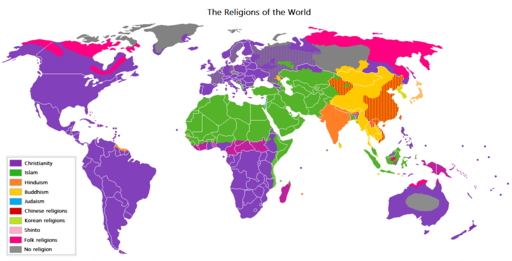 While discussions of “World Religions” often attempt to encourage appreciation of human diversity, these presentations have become the focus of scholarly critiques because of the harm that they cause. Such presentations appear to provide a clear way of describing the world (as illustrated in the map above), but the assumptions behind them often serve to promote European dominance that people present as simple descriptions. A recent animated presentation on Business Insider illustrating the spread of the five major world religions becomes the object of a range of critiques. Continue reading “The Harm of World Religions”
While discussions of “World Religions” often attempt to encourage appreciation of human diversity, these presentations have become the focus of scholarly critiques because of the harm that they cause. Such presentations appear to provide a clear way of describing the world (as illustrated in the map above), but the assumptions behind them often serve to promote European dominance that people present as simple descriptions. A recent animated presentation on Business Insider illustrating the spread of the five major world religions becomes the object of a range of critiques. Continue reading “The Harm of World Religions”
How Old is That?
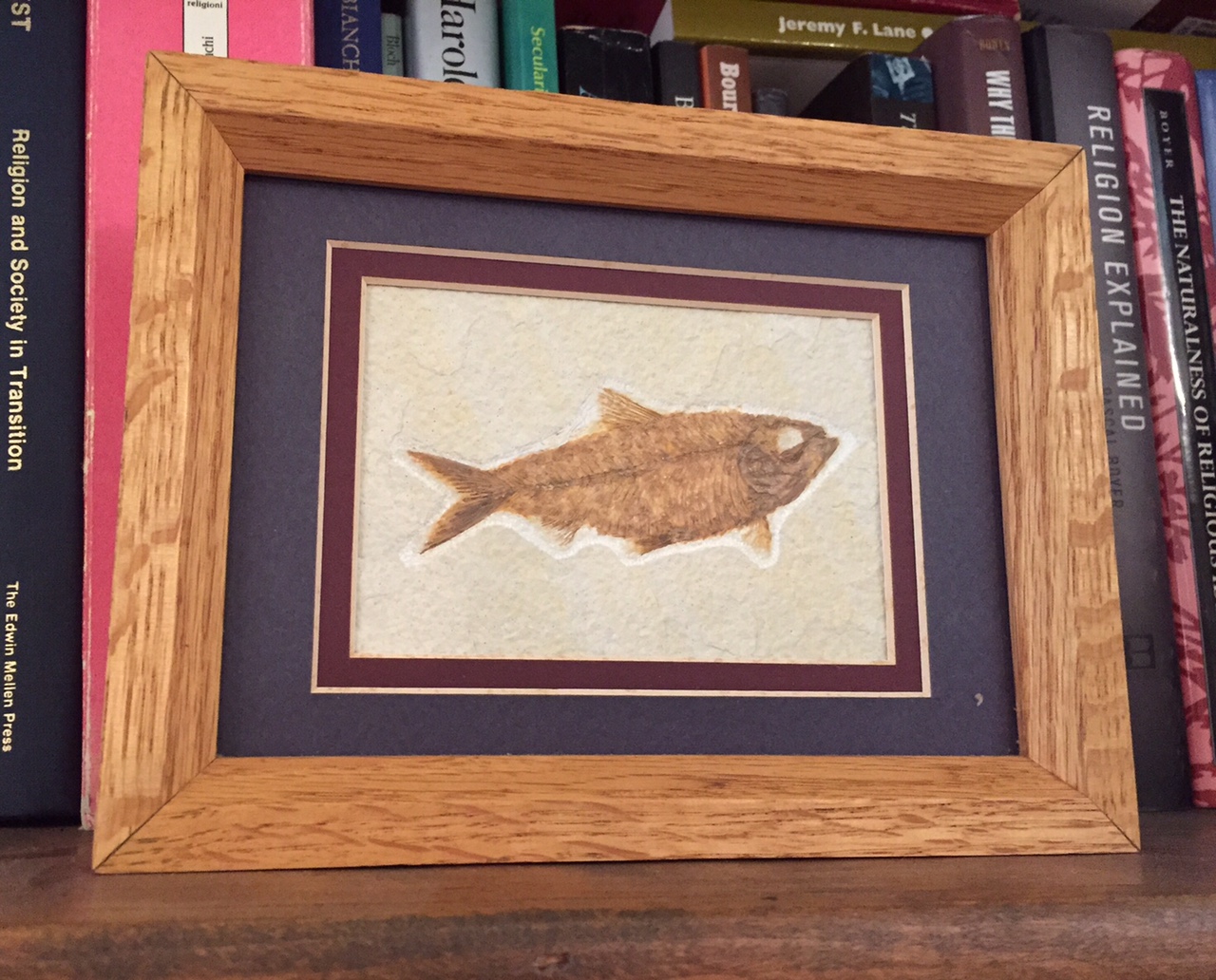
The following is a brief excerpt from my own Introduction to the soon-to-be published collection of essays, Fabricating Origins, from the Working With Culture on the Edge book series.
Among the assorted knick-knacks that line my office’s shelves — ranging from such relics as photos of friends and family or gifts I’ve accumulated over the years to a selection of tattered romance novels shelved long ago among my books by mischievous students — is a nicely matted and framed “fossil” of Knightia, a long extinct genus of small boney North American freshwater fish, dating to more than 35 million years ago (or what scientists know as the Eocene epoch), and which was recovered from the well-known (to fossil hunters, at least) Green River Formation in southwestern Wyoming. I bought it one summer, heavy wooden frame and all, about ten years ago in a gift shop in downtown Iowa City, Iowa, at the same time that I purchased for my Department’s library a number of other artifacts, such as the stereotypical dancing Shiva statue and the Thai-styled bust of Buddha, complete with its intricately carved curls. I never anticipated writing about my framed piece of sedimentary rock, though I have often used it in classes to illustrate a point or two about discourses on origins; I now realize that this rock might have some uses outside of the classroom. Continue reading “How Old is That?”
Our Extended Arms
 To open the Introduction to my 2003 collection of essays, The Discipline of Religion — a book concerned with, among other things, investigating the links between the invention of and social uses for privacy, on the one hand, and, on the other, the practical, governing role played by the discourse on belief, experience, or faith — I wrote as follows:
To open the Introduction to my 2003 collection of essays, The Discipline of Religion — a book concerned with, among other things, investigating the links between the invention of and social uses for privacy, on the one hand, and, on the other, the practical, governing role played by the discourse on belief, experience, or faith — I wrote as follows:
it is 1988 and I’m at home, living just outside Toronto, watching a television special on the Olympic torch relay across Canada to Calgary, the host of that year’s winter Olympic Games. I recall seeing a young boy, lucky enough to be selected to carry the torch for his designated distance, running through the crowded street with the torch held out over his head, obviously excited. His father runs alongside with his video camera, matching his son’s pace, documenting the event for posterity. The boy looks at his father, and into the camera, and says, “I can’t wait to get home and see this on TV. ” I recall thinking to myself, “You’re living it now, kid, so why do you have to get home to see it on television?”
This is likely one of the first memories I think I have of an occasion when the intertwined nature of the past, present, and future became apparent to me, i.e., when the present’s continual invention of itself was obvious, via its contrived distance from an imagined past that is no longer here or a hoped for future that has yet to appear. Continue reading “Our Extended Arms”
Words (and Peppers) Matter
 My colleagues have discussed on this blog the significance of labels many times, such as labeling something a restoration, a gang sign, and Paleo, or simply as something different. This concern for the significance of labeling, though, is not limited to the strategies of marketers and politicians or everyday observations. The selection of identifying labels often reinforces the dominant discourse, even when apparently not intended.
My colleagues have discussed on this blog the significance of labels many times, such as labeling something a restoration, a gang sign, and Paleo, or simply as something different. This concern for the significance of labeling, though, is not limited to the strategies of marketers and politicians or everyday observations. The selection of identifying labels often reinforces the dominant discourse, even when apparently not intended.
Rereading Fred Clothey’s Religion in India: A Historical Introduction (Routledge 2007) for my Survey of Asian Religions course, I noticed a significant example of the power of labels that I had missed previously. One passage in a section on Cochin Jews caught my attention this time. Continue reading “Words (and Peppers) Matter”
You Are What You Read, with Leslie Dorrough Smith (Part 2)

For a new Culture on the Edge series “You Are What You Read” we’re asking each member to answer a series of questions about books—either academic or non-academic—that have been important or influential on us.
2. Name one of your favorite theory books.
 Bruce Lincoln, Holy Terrors: Thinking About Religion After 9/11 (Chicago: University of Chicago Press, 2003)
Bruce Lincoln, Holy Terrors: Thinking About Religion After 9/11 (Chicago: University of Chicago Press, 2003)
This is one of my favorite theory books because of its approach toward and definition of religion. The definition, which has four parts, revolves around the first component: the foundation of religion, Lincoln asserts, is discourse. What makes religious discourse different from other types of discourse is that it appeals to a transcendent source (the most familiar version of which is “God”), which subsequently sets that claim beyond effective human critique significantly increasing the political weight of such claims. The other three components (practices, communities, and institutions) come to life only insomuch as they are socio-structural manifestations of that discourse. Continue reading “You Are What You Read, with Leslie Dorrough Smith (Part 2)”
#falsechoice
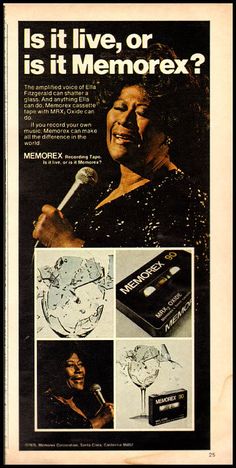 On Twitter earlier today it occurred to me that the old commercial advertizing Memorex brand cassette tapes (did I just date myself?) is an apt way to get at the problem of people who try to distinguish between, on the one hand, representation — an activity acknowledged to be lodged within the problems of discourse — and actual or authentic lived experience, on the other. Continue reading “#falsechoice”
On Twitter earlier today it occurred to me that the old commercial advertizing Memorex brand cassette tapes (did I just date myself?) is an apt way to get at the problem of people who try to distinguish between, on the one hand, representation — an activity acknowledged to be lodged within the problems of discourse — and actual or authentic lived experience, on the other. Continue reading “#falsechoice”
Traditional? Why not?!
 As I got back to working on my dissertation’s chapter on tradition a question kept coming up: “What’s a tradition?” It’s the question that hunts me day and night. How do we talk about this? Is it all around us? When do we say this is tradition or traditional and what do we accomplish by saying this? Is tradition even a thing (invented or not) or is it a process?
As I got back to working on my dissertation’s chapter on tradition a question kept coming up: “What’s a tradition?” It’s the question that hunts me day and night. How do we talk about this? Is it all around us? When do we say this is tradition or traditional and what do we accomplish by saying this? Is tradition even a thing (invented or not) or is it a process?
No doubt you’ll read some great insights on the issue in an upcoming volume from Culture on the Edge (in an essay by Craig Martin). But wait…Spoilers!! Until then, I’m left to try and solve or complicate this notion of tradition on my own. Continue reading “Traditional? Why not?!”
The Return of the Self
 Something interesting took place in the late 18th century; although we were already seeing books on such topics as self-denial, self-ignorance, and self-condemnation, a prior, declining discourse on the self seems to have been re-purposed and successfully connected to two other, equally prior, discourses that had, up until then, been of little consequence: the discourse on the individual and the discourse on experience. Continue reading “The Return of the Self”
Something interesting took place in the late 18th century; although we were already seeing books on such topics as self-denial, self-ignorance, and self-condemnation, a prior, declining discourse on the self seems to have been re-purposed and successfully connected to two other, equally prior, discourses that had, up until then, been of little consequence: the discourse on the individual and the discourse on experience. Continue reading “The Return of the Self”
Distinguished
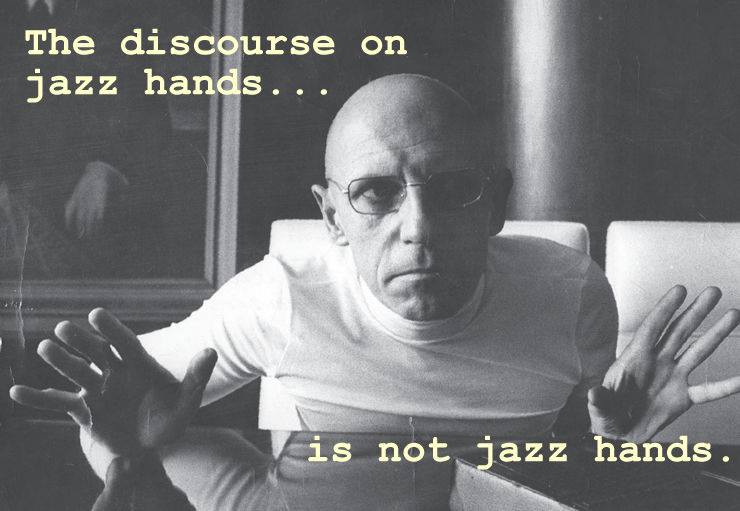
What’s Really Happening
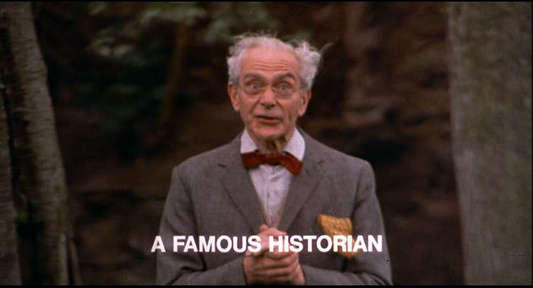
In a recent post I mentioned an upcoming paper I was presenting at a panel in Baltimore on explaining the causes of early Christianity’s origins. My concern in that paper, which I delivered a few days ago, was to draw attention to problems with attempts to account for the origins and development of any social movement — a critique that, for some in this one field, has already invalidated such things as quests for the historical Jesus. However, serious scholars yet persist in trying to account for the originary conditions of this thing we call Christianity.
The goal, of course, is to find out “what really happened,” as phrased by one person during the Q&A. Isn’t it? Continue reading “What’s Really Happening”
